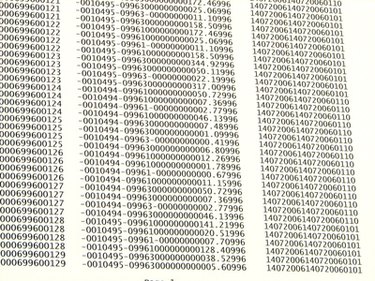
File system data management (or flat-file databases) served as the only method of file storage and retrieval before the advent of database management systems (such as relational databases). While retaining some use, flat-file databases suffer from poor accessibility, data redundancy, lack of standard file access and the inability to organize data.
Data Redundancy
Video of the Day
Since flat-file databases rely on files that contain records as text without any structural data, they cannot relate data from one file to another. For example, if one file contains an address record of Mr. Johnson, another file that uses address information on Mr. Johnson has to recreate that data. The second file must duplicate the data. This means that the address data on Mr. Johnson exists in two files at once. On large scales, this leads to data redundancy that can quickly take up space in the database and prove cost-inefficient.
Video of the Day
Limited User Access
Flat-file systems usually do not support access for multiple users. This means that multiple users at different workstations cannot access the same data simultaneously, limiting access to important data if multiple users search for the same data at the same time
Lack of Storage and Access Standards
Since a flat-file system relies on files to store data, it necessarily relies on the file system that defines how those files are stored and read. This ties data to the system that stores it, and any software used to access the data must conform to the system of storage. Accordingly, any changes to the database require changes to all the software that accesses it.
Lack of Transactions
Requesting data from a flat-file database simply retrieves data from a single file. Requesting and retrieving data from various files at the same time (called a "transaction") is impossible. This means that complex requests that make data retrieval accurate and efficient simply do not exist.